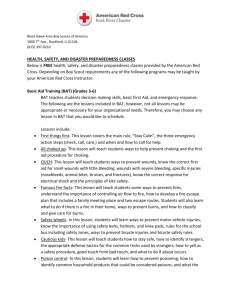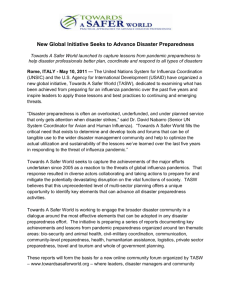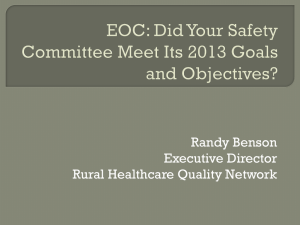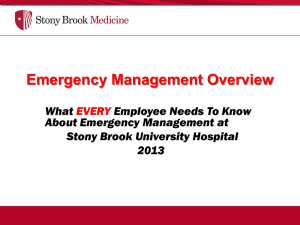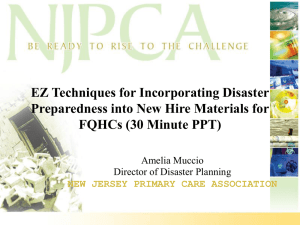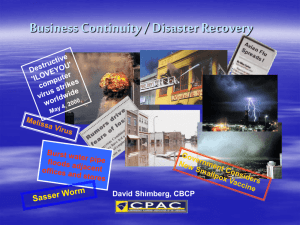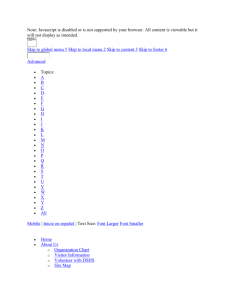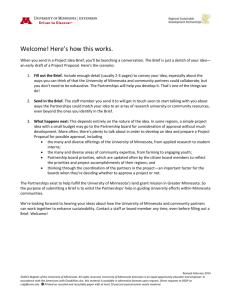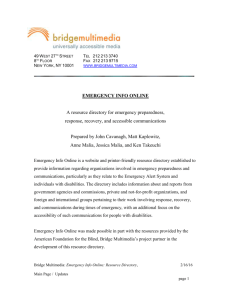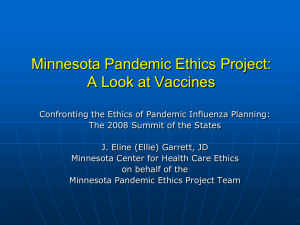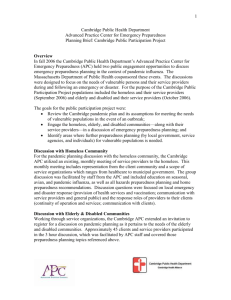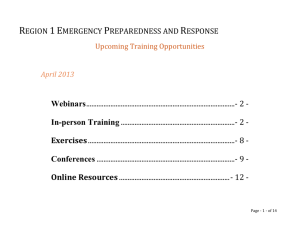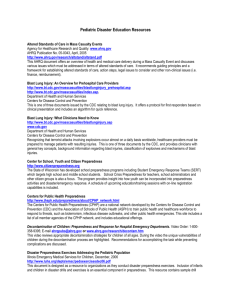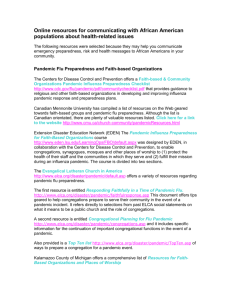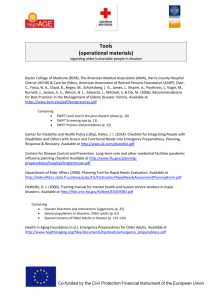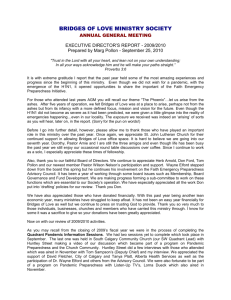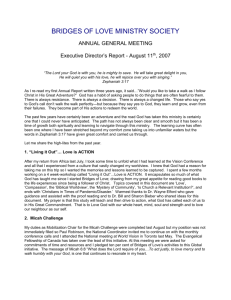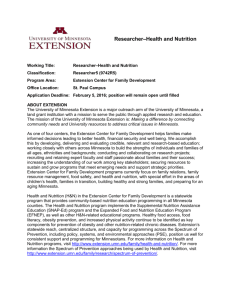DisasterMadnessconference
advertisement
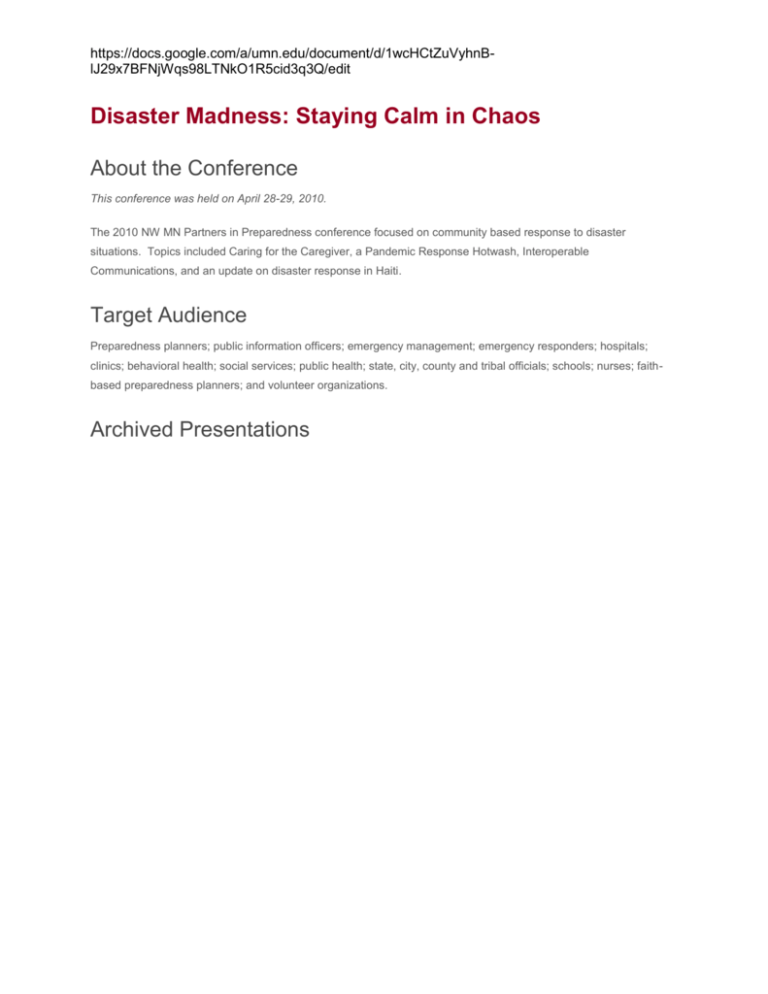
https://docs.google.com/a/umn.edu/document/d/1wcHCtZuVyhnBlJ29x7BFNjWqs98LTNkO1R5cid3q3Q/edit Disaster Madness: Staying Calm in Chaos About the Conference This conference was held on April 28-29, 2010. The 2010 NW MN Partners in Preparedness conference focused on community based response to disaster situations. Topics included Caring for the Caregiver, a Pandemic Response Hotwash, Interoperable Communications, and an update on disaster response in Haiti. Target Audience Preparedness planners; public information officers; emergency management; emergency responders; hospitals; clinics; behavioral health; social services; public health; state, city, county and tribal officials; schools; nurses; faithbased preparedness planners; and volunteer organizations. Archived Presentations https://docs.google.com/a/umn.edu/document/d/1wcHCtZuVyhnBlJ29x7BFNjWqs98LTNkO1R5cid3q3Q/edit ● ● Caring for the Caregiver ● ● ● Interoperable Communications Paul Nistler and Robin Hewitt, Upper Mississippi Mental Health Communications ARMER update NW EMS Wendy Chretien and Bill Bernjhelm, MN Department of Public Safety ● ● ● ● Pandemic Response Hotwash ● ● ● Incident Command for Health Care ● This breakout session is an introduction to incident command and provides a review of the Pandemic Response Hotwash PDF #2 Facilitated by Rob Carlson, Minnesota Dept. of Health Incident Command PDF #2 Michele Muckala and Cathy Blair, Clearwater County Memorial Hospital fundamentals of ICS 100 and ICS 200. ● ● PIO Training ● ● ● ● Minnesota Poison Control System Update ● ● Eat Your Dessert First: Five Questions That Can Change Your Life! Kevin Dean, City of Grand Forks PIO Kirk Hughes Working with Health Care Volunteers Rob Carlson Bob Veninga, Professor Emeritus, University of Minnesota School of Public Health Sponsors This event is sponsored by the Northwest Healthcare Systems Preparedness Committees, with funding provided by Health and Human Services. Co-sponsors include the Minnesota Department of Health, Greater Northwest EMS, and the University of Minnesota Center for Public Health Preparedness.



